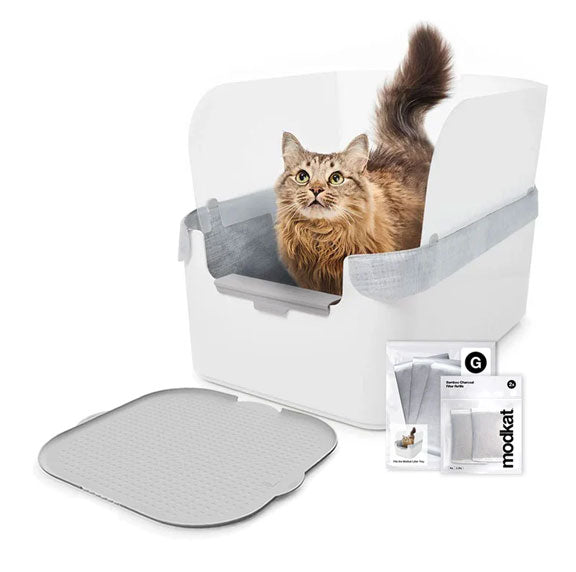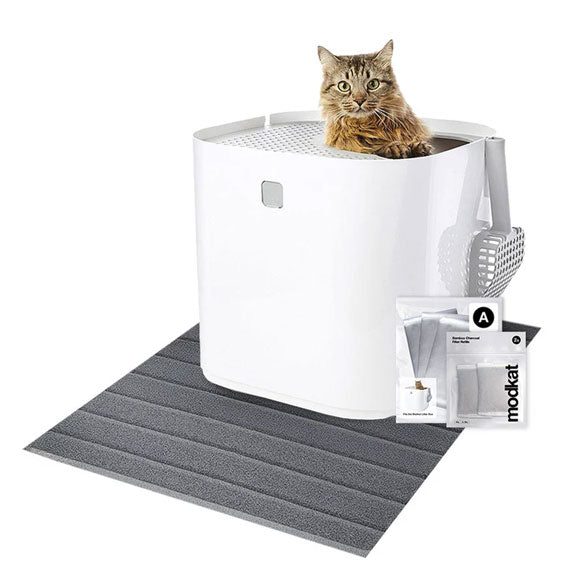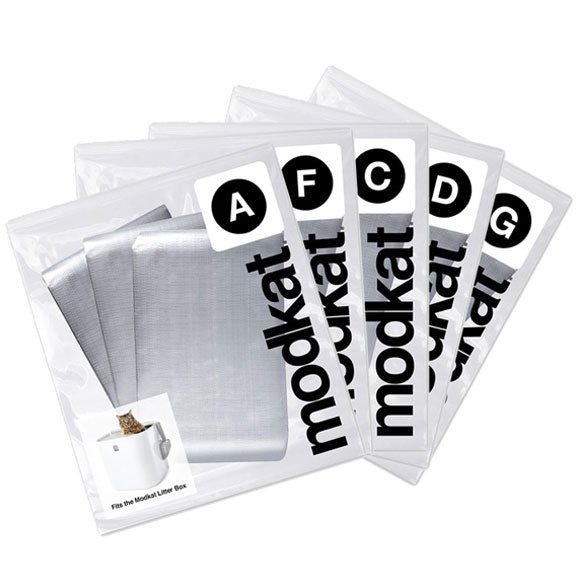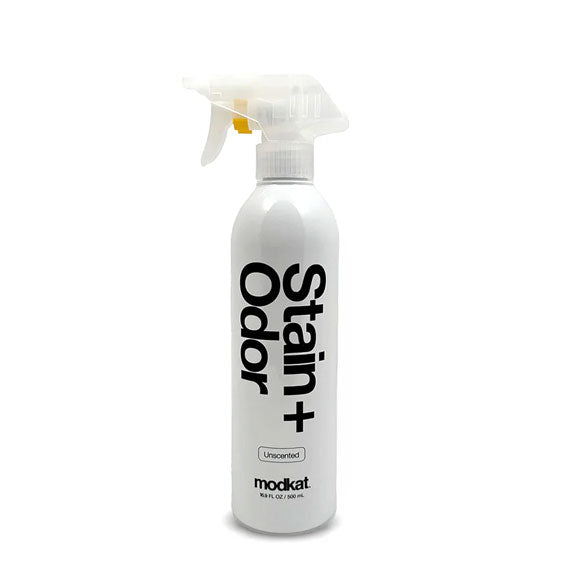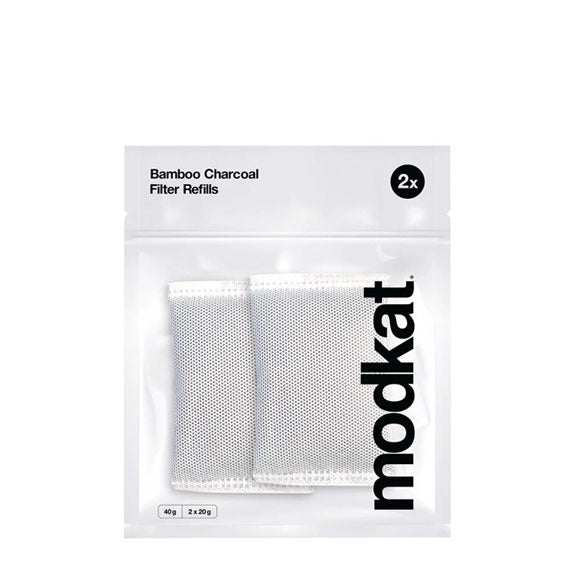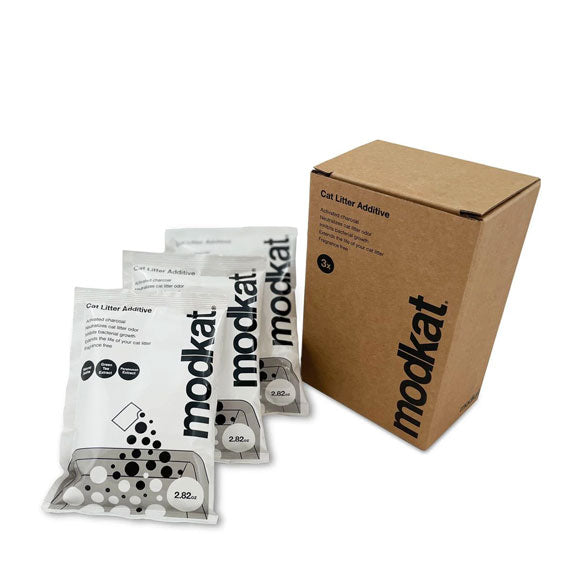Litter Boxes
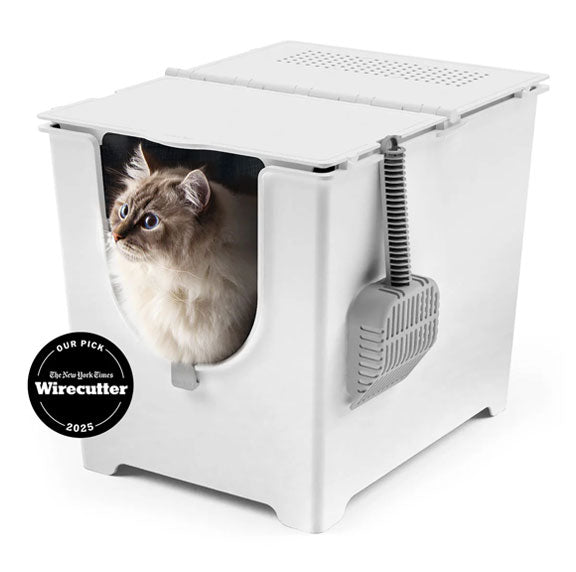
Modkat Flip
Front-Entry Litter Box

Modkat XL
Front/Top-Entry Litter Box
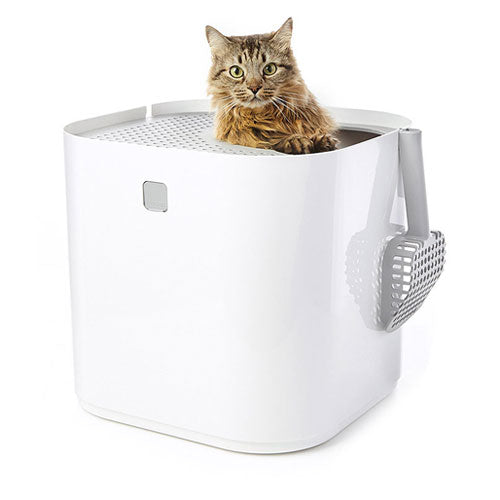
Modkat
Top-Entry Litter Box
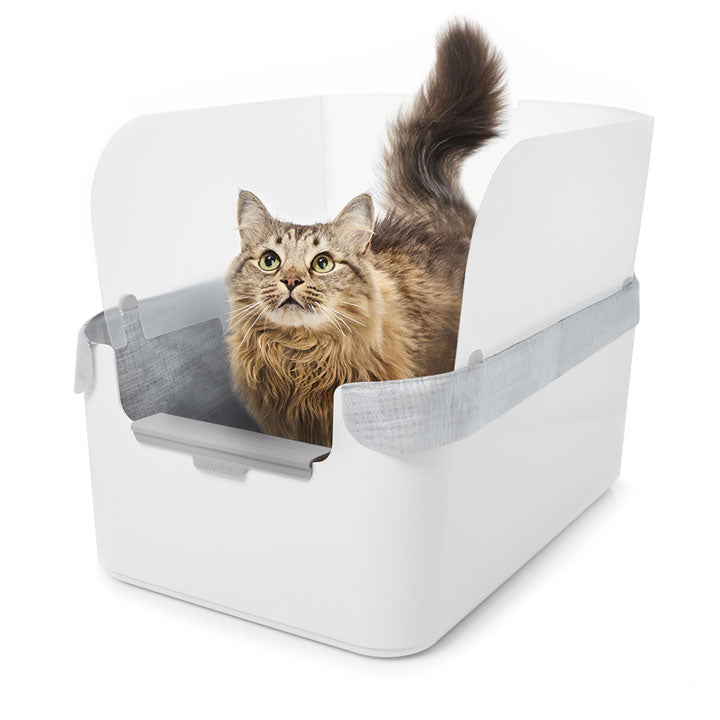
Modkat Tray
Open Litter Box
Bundles
Essentials

Litter Keeper
Two colors
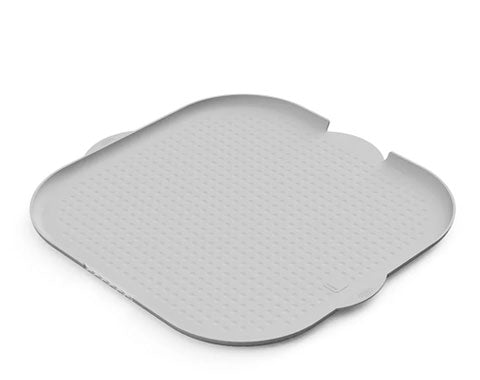
Litter Mats
Multiple styles, colors & sizes
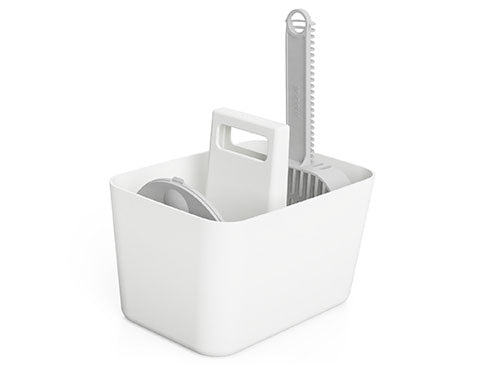
Tidy-Up Kit
Scoop holder & dustpan

Lounge + Play
Scratchers & toys
Refills
Add description, images, menus and links to your mega menu
A column with no settings can be used as a spacer
Link to your collections, sales and even external links
Add up to five columns
Add description, images, menus and links to your mega menu
A column with no settings can be used as a spacer
Link to your collections, sales and even external links
Add up to five columns
What plants are poisonous to cats and why?

Cats love to chew plants. Our pets also enjoy climbing on plants, hiding in them, and jumping out from behind them.
Fortunately, many beautiful flowers and tasty herbs do no harm to cats. Contrary to popular lore, you can be a pet parent and a plant parent without putting your cats at risk.
Some plants can poison cats, however. The trick is to know which plants to bring home and which ones to leave at the nursery. What plants will perk up your home and your kitty? And which household plants are toxic to cats?
Read on to learn more about which plants are poisonous to cats and how you can keep your home a safe space for your furry family member.
Household plants that won't harm your cat
Most common household plants are 100% safe for your cats. This includes attractive options such as hibiscus, impatiens, Boston ferns, spider plants, roses, and sunflowers. Just because a plant is beautiful and safe for a cat, however, doesn't mean it's right for your home.
Some plants that are fine for cats may harm dogs, and vice versa. Be sure to carefully investigate potentially poisonous plants carefully and choose greenery that will be safe for all your household pets.
Why do cats like to chew on plants?
Cats like to eat for the same reason you and I do — they're hungry! And they especially like to snack on things that taste good. To them, your houseplants may be the tastiest morsels they've ingested for a while.
Not all snacking comes from hunger, however. Like humans, cats may also nibble on their favorites because they are stressed, bored, or anxious. Since young cats are more likely to chew on plants than older cats, maybe they're attracted by the novelty of eating something fresh and new.
If your cat enjoys taking a bite out of your houseplants, it's not necessarily a problem. Just make sure to keep some safe, non-toxic options around your home and dispose of anything that could harm your pets.
Are spider plants poisonous to cats?
We hear this question a lot, and it's probably because many cats seem obsessed with spider plants. The answer is pretty straightforward: spider plants are safe for both cats and dogs. However, like catnip, spider plants might be mildly hallucinogenic, causing cats to enjoy the slight high they might get from the plant. Spider plants may also help cats with digestive issues.
What plants are poisonous to cats?
Autumn Crocus
Very poisonous to both cats and dogs. Signs your pet may have been poisoned by this plant include shock, diarrhea, bloody vomiting, multi-organ damage, and bone marrow suppression.
Azalea and Rhododendron
Poisonous to both dogs and cats. Signs a cat has been poisoned by an azalea or rhododendron include diarrhea, vomiting, weakness, and cardiac failure.
Daffodil
Poisonous to both cats and dogs. Signs your pet may have been poisoned by a daffodil include diarrhea, vomiting, and salivating. Ingesting a large amount may cause tremors, convulsions, low blood pressure, or cardiac arrhythmias.
Oleander
Poisonous to both cats and dogs. Signs of poisoning include colic, diarrhea, depression, abdominal pain, drooling, and death. Incidentally, oleander is also poisonous to humans, and ingesting a single leaf can kill an adult.
Kalanchoe (Mother-in-Law Plant)
Poisonous to both cats and dogs. The clinical signs of poisoning from this plant include diarrhea and vomiting, and (rarely) an abnormal heart rhythm.
Hyacinth
Poisonous to both cats and dogs. Hyacinth poisoning may result in depression, tremors, intense vomiting, or diarrhea, occasionally with blood.
English Ivy
Poisonous to both dogs and cats. This plant's foliage is even more poisonous than its berries. Clinical signs of poisoning from English ivy include diarrhea, vomiting, hypersalivation, and abdominal pain.
Lily
Extremely poisonous to cats but not at all poisonous to dogs.
The lily is a well-known spring or summer flower because of its beauty and sweetness. Potted lilies make popular gifts around Easter. Scientists still aren't sure why lilies are so poisonous to cats, but they do know that poison affects the urinary system. Cats can go into kidney failure from ingesting even the pollen of a lily.
Cyclamen
Poisonous to both dogs and cats. Signs of toxicity include diarrhea, vomiting, and salivation. Ingesting large amounts of tubers can cause seizures, heart rhythm abnormalities, and ultimately death.
Morning Glory
Poisonous to both cats and dogs. Ingesting morning glories generally results in vomiting, but eating a lot of the seeds may also cause hallucinations.
Tulips
Poisonous to both dogs and cats. Tulip poisoning can result in vomiting, diarrhea, depression, or hypersalivation.
Aloe
Poisonous to both cats and dogs. Aloe can cause vomiting and diarrhea. Interestingly, the gel is non-toxic to animals.
Daisy
Poisonous to both cats and dogs. Clinical signs of daisy poisoning in animals include dermatitis, incoordination, vomiting, diarrhea, and hypersalivation.
Snake Plant
Poisonous to both cats and dogs. Most cats experience a mild reaction to ingesting saponin, a toxin that's part of all the components of a snake plant. Signs of poisoning include vomiting, diarrhea, lethargy, drooling, and abdominal pain.
While household pets can interact safely with many plants, it's a good idea to double-check any flower or fern you plan to purchase against a list of toxic plants for pets. We want to keep our pets healthy and happy.
What part of a plant is actually poisonous to cats?
All parts of a toxic plant can be poisonous to cats. In the daffodil, for instance, the heads and leaves can make a cat sick, but the bulb can cause death. All parts of a lily are dangerous.
Be careful even of bouquets because some plants — such as the aforementioned lily — contain pollen that can harm your cat. In fact, pollen is especially harmful because cats don't notice they're carrying it.
Symptoms of plant poisoning in cats
How do you know if your cat has ingested something poisonous? Signs of plant poisoning include:
- Twitching
- Diarrhea
- Drooling
- Seizures
- Collapse
- Difficulty breathing
- Sneezing
- Poor appetite
- Vomiting
- Confusion
- Depression
- Lethargy
- Coma
- Irritated skin, eyes, or gums
How fast do toxic plants affect cats?
Cats can start to show signs of poisoning within a few minutes of ingesting a toxic substance. If they've only gotten into a small amount of a mild toxin, it might take a few hours. Factors such as your cat's size, overall health, how its body processes toxins, and what poison your cat has consumed all help determine the speed at which your cat becomes ill.
Do cats know not to eat poisonous plants?
Fortunately, only a few cats a year show up at vets' offices with plant poisoning. Most of our pets are wary of snacking on a plant they don't recognize and will give a wide berth to anything poisonous. Those that do ingest a suspicious plant often have mild cases of plant poisoning, and many appear to have transferred the pollen to themselves while grooming
How do you treat a cat for plant poisoning?
If you suspect your cat has been poisoned, you should act immediately.
First, remove the plant so none of your pets can ingest any more of it. Second, write down the time you noticed your cat became ill and the kind of plant you believe the animal consumed. Then, call your cat-friendly vet.
Follow the advice your vet gives you, which could include taking the animal to the clinic. In this case, you may also need to bring along the offending plant and a sample of your pet's vomit if applicable.
Tips for keeping your kitty safe
- Get rid of toxic plants, or keep them where your cat can't access them. The easiest way to keep your cat safe from toxins is simply to remove them from your cat's reach.
- Make a repellent spray. Cats are repulsed by certain scents, especially citrus smells like orange, grapefruit, lime, or lemon. You can help keep your cats safe by mixing up a repellent spray from lemon juice and water and spritzing the plant's leaves.
- Invest in plants your cat can enjoy. What plants can you have in your house with a cat? Check out this enormous list of safe plants, which includes herbs such as dill alongside unlikely choices like poison ivy.
- Give your cat safe toys to play with. Cats enjoy balls, bells, stuffed animals, chewy toys, catnip, lasers, ribbon teasers, and much more. Nothing inspires a cat to avoid bad things than giving him plenty of good things to play with.
Shop the Modkat litter boxes and accessories to freshen up your cat litter area today!
“It looks nicer than any other hooded or open option we considered.”

Categories
Meow from Brooklyn.
Sign up and get early access to product drops, exclusive offers, and the occasional cat meme.
Similar products related to this blog:
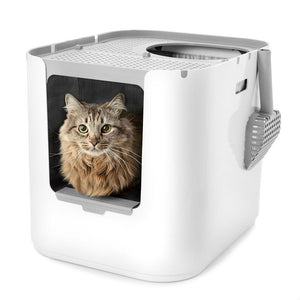
"It looks nicer than any other hooded or open option we considered."

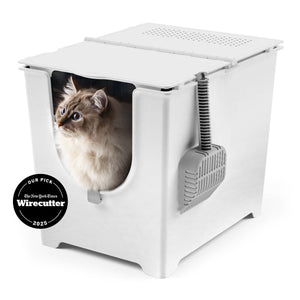
"This litter box keeps everything in, nothing gets out the sides."

"My beautiful ragdoll cat and I both love the new Modkat Litter tray!"


